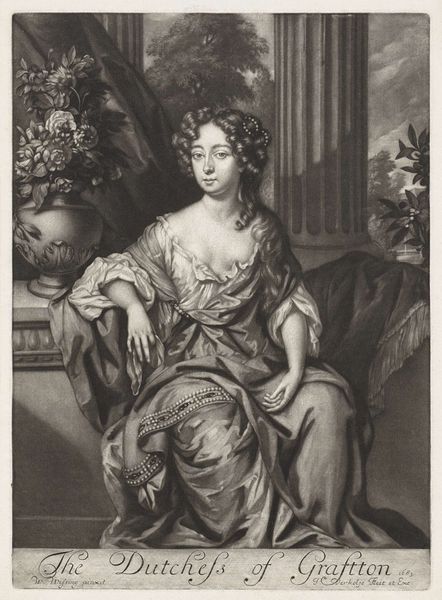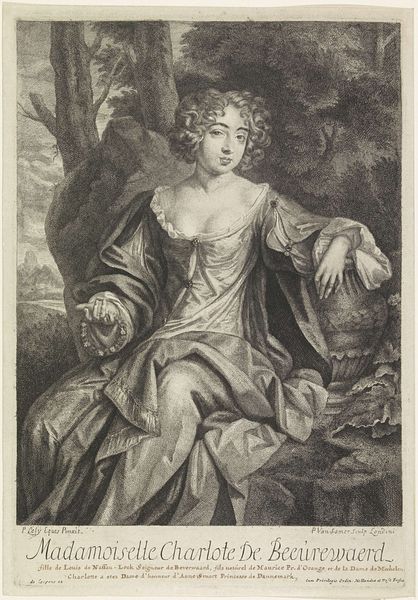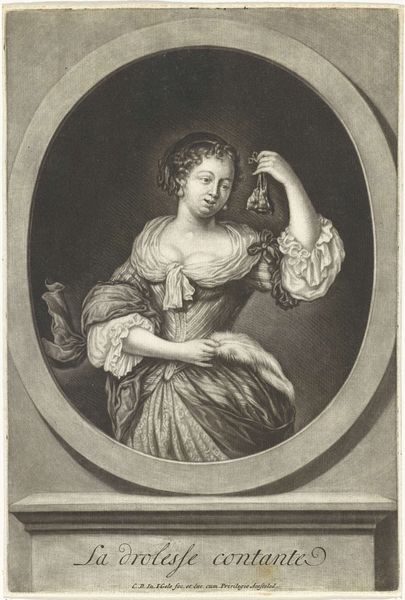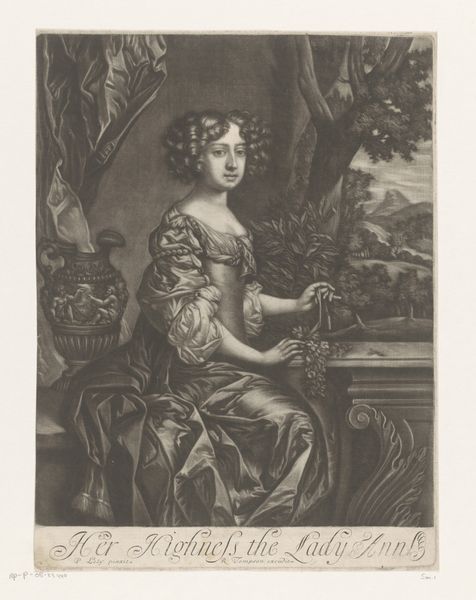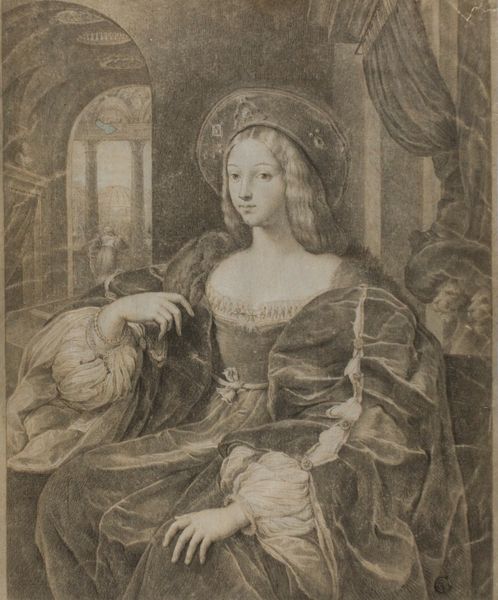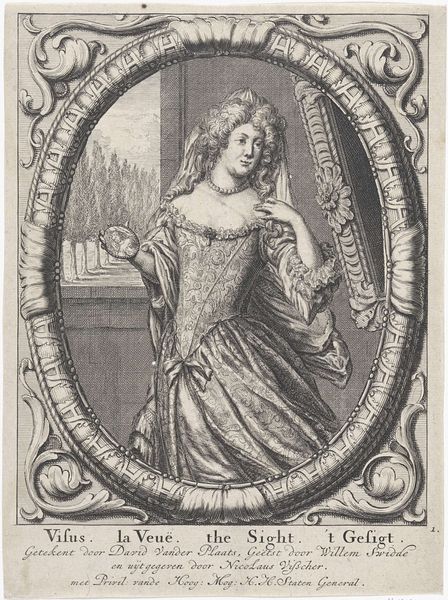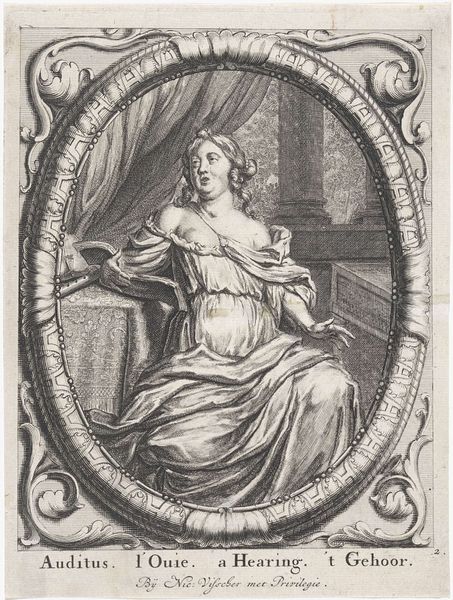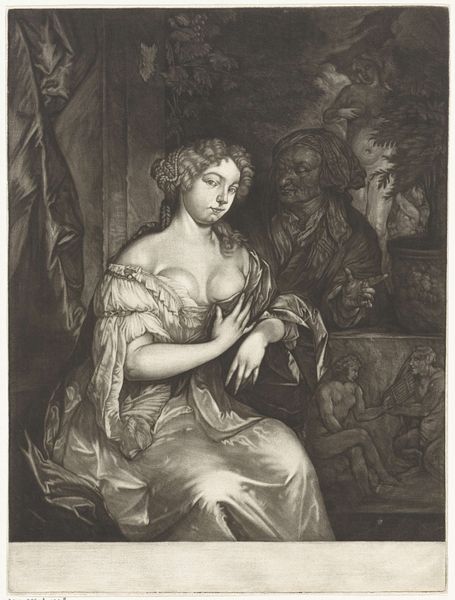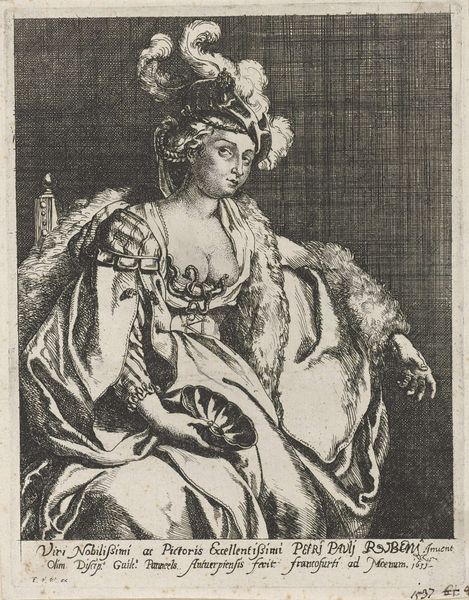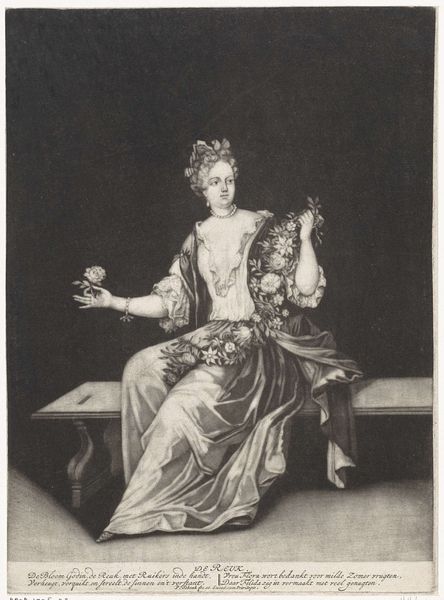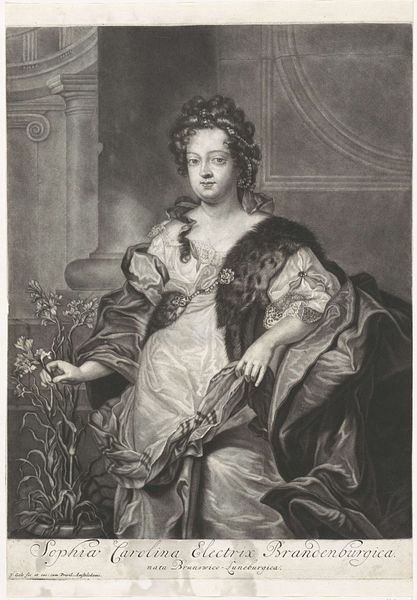
Lady with pot of flowers; The Lady Elisabeth Jones after Sir Peter Lely 1748 - 1781
0:00
0:00
Dimensions: 334 mm (height) x 252 mm (width) (bladmaal)
Thomas Watson created this print, Lady with pot of flowers; The Lady Elisabeth Jones after Sir Peter Lely, in the late 18th century. It offers a window into the representation of women and the dynamics of power within portraiture of the time. Watson's print replicates a painting by Sir Peter Lely, who was the leading portraitist in the court of Charles II. Consider the role of portraiture in solidifying social status and projecting ideals of beauty and femininity. What does it mean to reproduce an image of a woman who lived in the late 17th century almost a hundred years later? Lady Elisabeth Jones is depicted with symbols of wealth and leisure: the draped fabric, a flower pot, and a serene indoor setting. These elements speak to her position within the British aristocracy. Her subtle gaze and relaxed posture might be read as conveying the virtues of femininity expected of women in her social sphere. While reproducing Lely’s work, Watson also participates in constructing a visual language around class, gender, and identity.
Comments
No comments
Be the first to comment and join the conversation on the ultimate creative platform.
